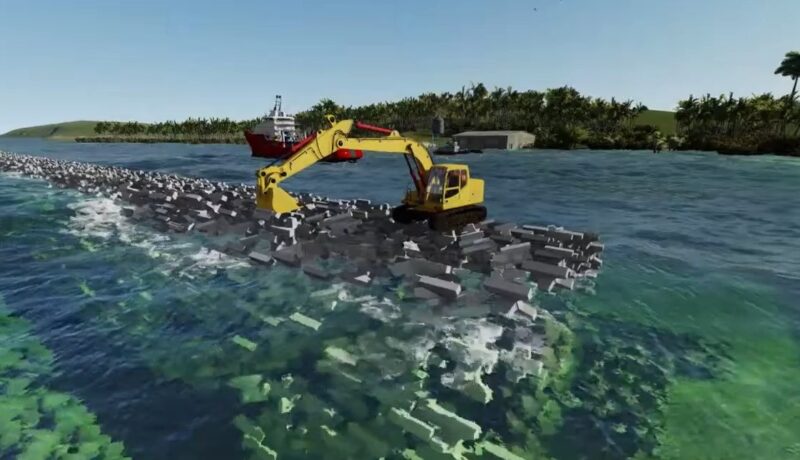Exploring the Diverse World of Civil Engineering Fields Civil engineering — is a multifaceted discipline that is as diverse as it is intriguing. It touches almost every aspect of our lives, molding the very fabric of our modern societies. Each subfield is a unique world in itself, with specialized engineers shaping our infrastructure, environment, and lifestyle.
From the pristine water that gushes out from our taps to the resilient skyscrapers that touch the sky, their contributions are ubiquitous, yet often overlooked. This post takes you on a journey through the rich tapestry of civil engineering fields, unraveling the role each plays in creating the world we inhabit.
Water Resource Engineering: The Lifeline of Civilization

Water — an essential resource that sustains life. It gushes out as you twist the tap, appearing pristine, and perfectly safe for consumption. You barely give it a second thought, a luxury a Water Resource engineer can’t afford. For these unsung heroes, the safety, distribution, and availability of water are a daily preoccupation. Water Resource engineers are the guardians of our water supply, ensuring its safety and sustainability.
Their role is integral to human survival and public health. The challenge of making clean drinking water accessible to all is not just a job, but a noble mission — a quest that resonates with the inherent value of water and its pivotal role in our lives.
Transportation Engineering: The Art of Motion
Did you stride across a street today? Patiently awaited the walk signal? Chances are, you did, without dedicating much thought to the process. Yet, these seemingly mundane activities are the result of meticulous planning by transportation engineers. Transportation engineering is about orchestrating smooth and safe motion for both people and vehicles.
These engineers delve into the complex psychology of human behavior at traffic intersections, stoplights, and crosswalks to ensure efficient, safe transit. Their work is not just about facilitating movement, but choreographing the urban dance of commuting.
Geotechnical Engineering: Building from the Ground Up
Have you ever stopped to marvel at a construction site, observing the gaping hole that signals the start of something new? That is where geotechnical engineers step in, working their magic even before the first brick is laid. Geotechnical engineers have a fascinating job — they investigate the earth beneath our feet.
Their mission? To ensure a solid foundation for our buildings. They probe into the composition of rocks and soil, the hidden rivers of underground water. Their detective work dictates the safe placement and design of our built environment, ensuring structures stand firm against the tests of time and nature.
Coastal Engineering: Guardians of Our Shores

Imagine calling the beach your office — a possibility if you’re a coastal engineer! Our shorelines are continuously at risk from human actions and shifting weather patterns. Coastal engineers are the first line of defense, striving to safeguard our precious coasts.
These engineers engage with the dynamic interface of land and sea, grappling with the reality of beach erosion and the protection of our beaches and coasts. They determine where reinforcements like sand should be added to preserve our coastlines. This work ensures that our beaches remain scenic retreats for generations to come.
Structural Engineering: Designing Against Disasters
Do you fret about the building you’re currently in surviving an extreme weather event or a seismic shake? Probably not, but a structural engineer constantly thinks about such challenges. Structural engineers are the architects of resilience, designing and planning our schools, houses, and skyscrapers to stand up to nature’s fury. They work to ensure that our built environments are robust, durable, and secure, able to withstand powerful forces and safeguard lives.
Environmental Engineering: Balancing Progress and Preservation
Have you contemplated how the flurry of construction around us influences the environment? The impact on local flora and fauna, water resources, and air quality? That’s where environmental engineers come in. These engineers act as sentinels of the environment amidst human development.
They investigate the potential ecological impacts of new construction projects and strategize ways to mitigate harmful effects. Their mission is to reconcile the goals of development with the need to preserve our precious natural environment.
Construction Engineering: Choreographing the Dance of Creation
Busy construction sites buzzing with activity might appear chaotic to the untrained eye. Yet, there’s an underlying order, a symphony orchestrated by the construction engineer. Construction engineers are the maestros of the bustling construction site, coordinating the complex ballet of people, trucks, cranes, and cement mixers. They juggle myriad challenges, like transporting wet concrete to the top of a high-rise before it hardens. Their craft is essential to transform architectural visions into concrete realities.
Site Planning and Development: Shaping Our World
Ever wondered about the birth of your neighborhood, city, or town? The blueprint of buildings, roads, and utilities didn’t materialize out of thin air. This is the realm of site planners and developers. These professionals are the masterminds behind the evolution of our urban landscapes. They collaborate with various civil engineering specialists to design functional and sustainable environments. Their work is fundamental to shaping our built world and fostering community development.
Architectural Engineering: Crafting Inner Excellence
We’ve all heard the phrase, “It’s what’s inside that counts.” That rings especially true in the world of architectural engineering. Despite the external allure of skyscrapers and stadiums, their interior workings are equally, if not more, impressive. Architectural engineers shoulder the responsibility of shaping the internal systems of buildings.
They ensure occupant safety and comfort by designing integral systems such as heating, air conditioning, plumbing, lighting, and fire protection. Their role is crucial to crafting the buildings we inhabit, transforming them from mere structures into functional, hospitable spaces.
Conclusion
The expansive world of civil engineering is truly fascinating. Each field, with its distinct focus, intertwines to build, preserve, and enhance our societies. From water resource engineers ensuring safe drinking water to architectural engineers optimizing interior comfort and safety, their work collectively enriches our daily lives. Their relentless efforts to balance human progress and environmental preservation make our cities safer, more functional, and more sustainable.
As we stand on the cusp of a future punctuated by rapid urban development, the role of civil engineering becomes even more pivotal. That’s why you should engage your kids with some interesting kid’s activity, so that we are sure that we are going to have great engineers in the future. It is through their diverse expertise that we will continue to shape a world that harmoniously blends human needs with environmental sustainability. So, the next time you turn on your tap or cross a busy street, spare a thought for the civil engineers who made it all possible.







